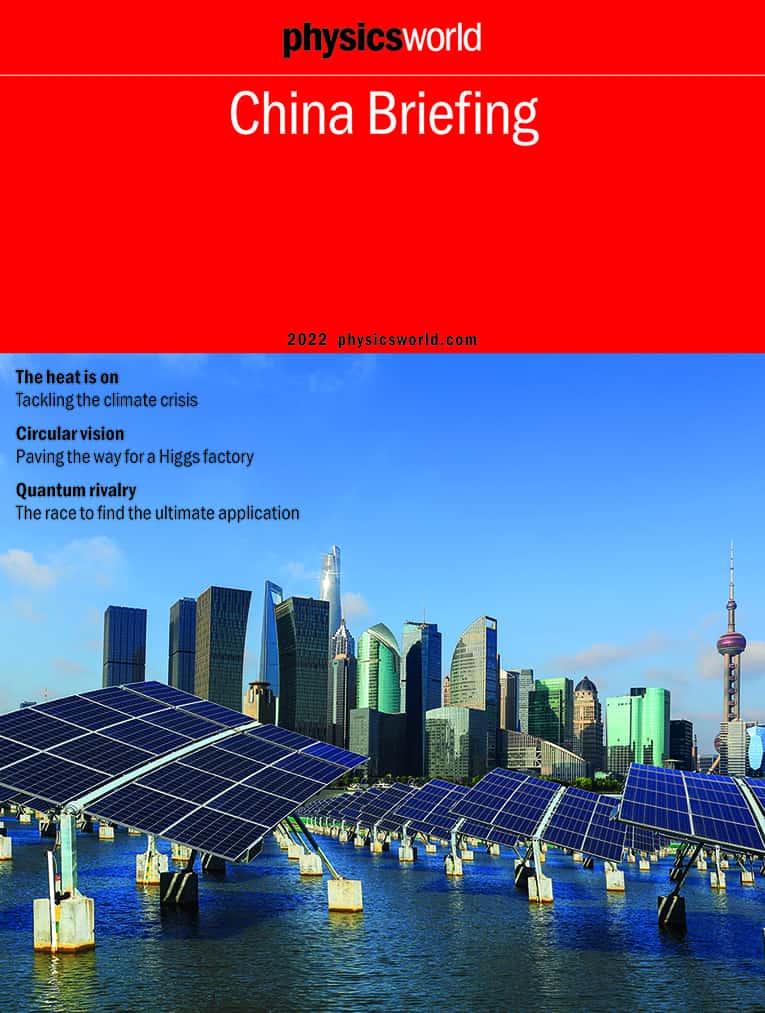When most of the world was dealing with the onslaught of the COVID-19 pandemic in 2020, which forced lockdowns and an intense effort to create the first vaccines, China was setting out to tackle another huge scientific issue of our time: the climate.
In a surprise announcement to the UN general assembly in September 2020, Chinese president Xi Jinping laid out the country’s plan to transition from one of the world’s biggest greenhouse gas emitters to a “net zero” carbon society by 2060.
The move came as a surprise to regional government officials in China who are still processing what the goal means and what policies they need to adopt to meet it.
In the 2022 Physics World China Briefing, we outline how China could achieve this ambitious goal via the roll-out of renewable energy, the installation of carbon capture, adding new usage and storage technologies to existing coal power stations along, perhaps, with a renaissance of nuclear power.
This year’s briefing takes a look at several other scientific areas that China is focusing on, not least quantum technologies and we examine a new upgrade to the Beijing Electron Positron Collider that when complete in 2024 will see the current collision rate triple and extend the maximum collision energy to 5.6 GeV. China sets out its climate ambitions
The previous decade has also seen China excel in space, with the launch of several Moon missions. In the briefing we talk to Thomas Smith from the Institute of Geology and Geophysics Chinese Academy of Sciences about analysing some of the first lunar samples that have been brought back from the Chang’e-5 sample-return mission.
Let us know what you think about the publication on Twitter, Facebook or by e-mailing us at pwld@ioppublishing.org.




